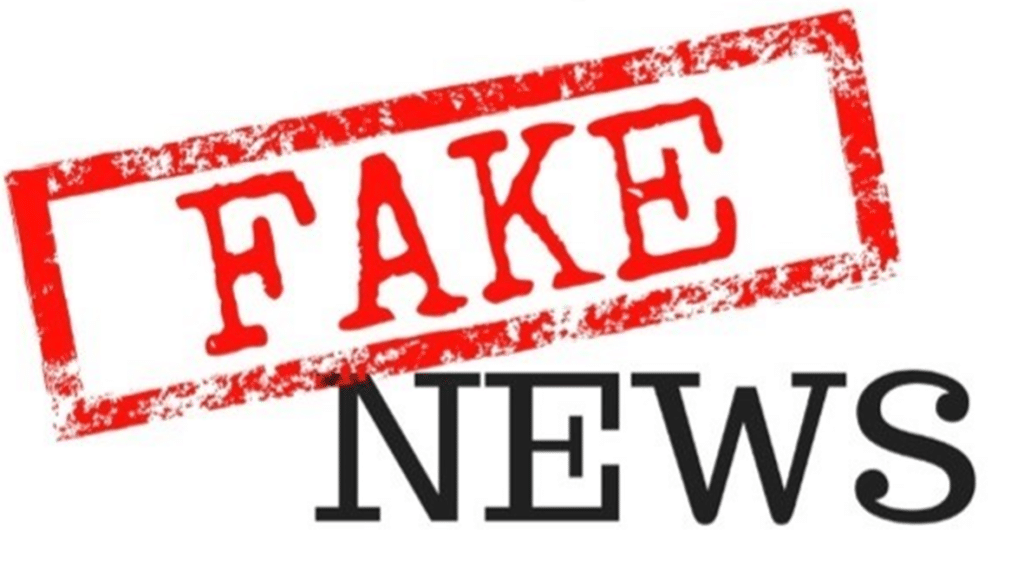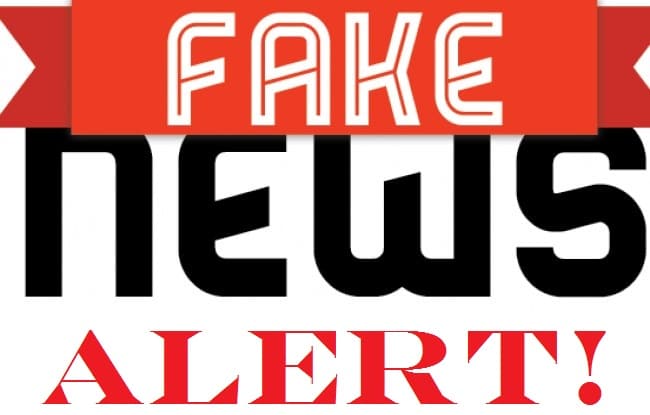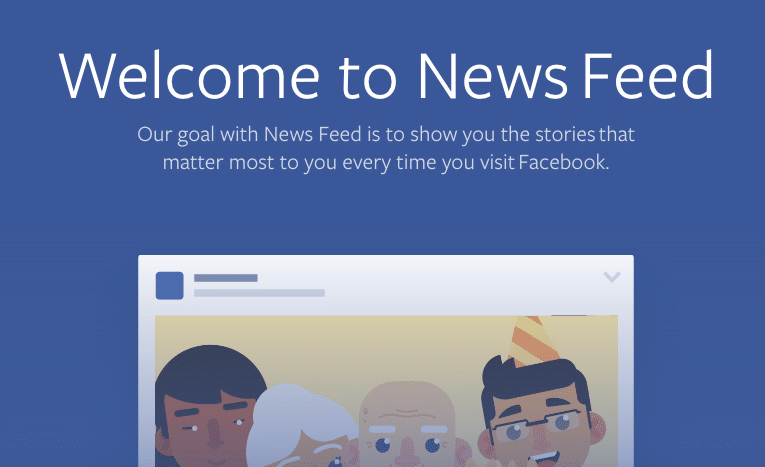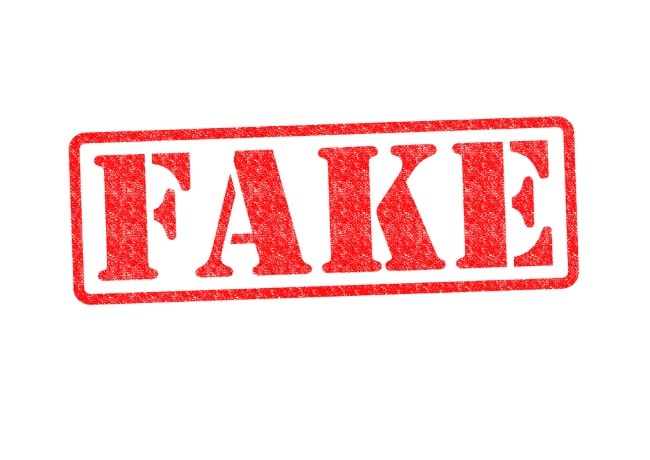
“Everyone deserves a voice. Not everyone deserves a microphone.” – Aaron Sorkin
The internet has given a voice to everyone. Social media has given them the microphone.
That is what we see around today. The internet, which was designed and initially used to connect and communicate, is now the tool used to propagate. Views and opinions are broadcast through the internet in a way that has garbled the difference between fact and fiction. In most cases, the seamless blending of fact and fiction has brought about disastrous effects.
Lives have been lost.
Everyone, from the President of the United States, Donald Trump, to the roadside political henchman today knows about fake news. This is the news that does not exist but has been cooked up to influence and provoke people into action. Images, videos and texts are morphed and created to give an impression that people of their creed and breed have been targeted. This sets up a sense of revenge among those who are the target of fake news.
To many, fake news is the weapon of the Third World War.
You and I have a responsibility to combat fake news, as and when we see it. Be it the harmless Facebook post that tells you how UNESCO has selected the Indian national anthem as the best in the world to images of celebrities morphed for humor, we have to tackle it head-on.
What is fake news?
Fake news refers to false or misleading information presented as news or factual reporting. It can be created and spread through various mediums, such as social media, websites, or traditional news outlets.
Fake news is a type of yellow journalism or propaganda that consists of deliberate misinformation or hoaxes spread via traditional print and broadcast news media or online social media. This false information is mainly distributed by social media but is periodically circulated through mainstream media. Fake news is written and published with the intent to mislead in order to damage an agency, entity, or person, and/or gain financially or politically, often using sensationalist, dishonest, or outright fabricated headlines to increase readership, online sharing, and internet click revenue.
Fake news has become a significant concern in recent years due to its potential to deceive and manipulate people, influence public opinion, and undermine trust in reliable sources of information.
An example of a Fake news
An example of fake news is the infamous “Pizzagate” conspiracy theory that emerged during the 2016 United States presidential election cycle. A fabricated news story claimed that high-ranking members of the Democratic Party were operating a child sex ring out of a pizza restaurant in Washington, D.C. The story was completely false, but it spread rapidly on social media and led to real-world consequences when a man believing the conspiracy theory fired shots inside the restaurant.
Misinformation Vs Disinformation
Misinformation and disinformation are related terms but have distinct meanings:
1. Misinformation: Misinformation refers to false or inaccurate information that is shared without the intent to deceive. It can be spread unintentionally or due to a lack of knowledge, misunderstanding, or errors. Misinformation can be spread by individuals who genuinely believe the information is true but may not have verified its accuracy. It is important to note that misinformation does not involve deliberate intent to mislead or deceive.
Example of misinformation: Sharing a social media post about a celebrity’s death without verifying the information, only to later discover that it was a rumor.
2. Disinformation: Disinformation, on the other hand, refers to deliberately false or misleading information that is intentionally created, manipulated, or disseminated to deceive or mislead others. It involves a deliberate intent to misinform or manipulate public opinion for various purposes, such as political, ideological, or economic gain. Disinformation often involves strategic planning, propaganda techniques, and the use of digital platforms to amplify its reach.
Example of disinformation: A coordinated campaign spreading false information about a political candidate to discredit their reputation and influence public opinion.
In summary, the key difference between misinformation and disinformation lies in the intent behind the information. Misinformation is false information shared without intent to deceive, while disinformation involves deliberate deception and manipulation with the intention to mislead or deceive others.
Impact of fake news on youth
Fake news can have significant impacts on youth, given their high levels of digital engagement and reliance on online platforms for information. Here are some key impacts of fake news on young people:
1. Misinformation and distorted worldviews: Fake news can distort the understanding of facts and events among young people. If they consume and believe false information, it can shape their worldview and lead to inaccurate perceptions of society, politics, and various issues. This can hinder their ability to make informed decisions and engage in constructive dialogues.
2. Impaired critical thinking skills: Fake news often relies on persuasive techniques and manipulative tactics to spread false information. This can challenge the critical thinking abilities of young people, making them more susceptible to misinformation. It becomes crucial for young individuals to develop strong critical thinking skills to evaluate the credibility of news and information sources.
3. Polarization and echo chambers: Fake news tends to target emotions and reinforce existing beliefs or biases. This can contribute to the formation of echo chambers, where young people are exposed only to information that confirms their preconceived notions. It can lead to increased polarization, intolerance of diverse perspectives, and hinder open-mindedness.
4. Trust issues and cynicism: The prevalence of fake news can erode trust in traditional news sources and institutions among young people. When they encounter misinformation repeatedly, it can create a sense of cynicism, skepticism, and apathy towards information in general. This can have implications for their engagement with news and democratic processes.
5. Social and emotional impact: Fake news can evoke strong emotions, including fear, anger, and anxiety, among young individuals. False information about public health, safety, or social issues can cause undue stress or panic. Moreover, the spread of fake news through social media can lead to cyberbullying, online harassment, and social divisions, affecting the emotional well-being of young people.
6. Media literacy and digital citizenship: The presence of fake news underscores the importance of media literacy education and digital citizenship among young people. It becomes crucial to equip them with the skills necessary to critically evaluate information, discern reliable sources, and navigate the complexities of the online world.
Addressing the impact of fake news on youth requires a comprehensive approach involving media literacy programs, critical thinking education, responsible use of social media platforms, and promoting digital citizenship. Empowering young individuals with the skills to navigate the information landscape is key to fostering informed and responsible digital citizens.
Impact of fake news on behavioural changes
Consuming fake news can potentially lead to a range of behavioral changes in individuals. Here are some observed effects:
1. Misinformation acceptance: People who consume fake news may be more likely to accept false or misleading information as true. This can result in a distorted perception of reality and inaccurate beliefs about various subjects.
2. Confirmation bias: Fake news often aligns with people’s existing beliefs or biases, and individuals may seek out and believe information that confirms their preconceived notions. This can reinforce polarized views and hinder open-mindedness.
3. Spread of misinformation: People who believe fake news may unknowingly or knowingly share it with others, contributing to the rapid spread of false information within their social networks. This can perpetuate the cycle of misinformation and make it more challenging to combat.
4. Erosion of trust: Repeated exposure to fake news can erode trust in reliable sources of information, including reputable news outlets and institutions. This erosion of trust can lead individuals to doubt accurate information and rely more on unreliable sources.
5. Increased polarization: Fake news often targets emotions and appeals to tribal instincts, which can contribute to increased polarization within society. It can create divisions, reinforce echo chambers, and lead to hostility between different groups holding opposing views.
6. Damage to reputation and credibility: Individuals or entities targeted by fake news may suffer reputational damage due to false allegations or misinformation. This can have long-lasting consequences and impact public perception.
7. Decreased civic engagement: Consuming fake news may lead to disillusionment, apathy, or confusion among individuals, resulting in decreased civic engagement. When people lose faith in accurate information, they may become less likely to participate in public discourse, vote, or engage in community activities.
It is important to note that these behavioral changes are not universal and may vary from person to person. Different factors, such as critical thinking skills, media literacy, and individual susceptibility to manipulation, can influence how people respond to fake news.
Impact of Fake news on Indian Politics, Society and Culture
Fake news can have significant impacts on Indian politics, society, and culture. Here are a few examples of how fake news has affected these domains:
1. Indian Politics:
– Misinformation during elections: Fake news can be used to manipulate public opinion, influence voter behavior, and shape electoral outcomes. For example, false information circulated during elections can target specific political parties or candidates, spreading baseless allegations or fabricated stories to damage their reputation.
– Communal tensions: Fake news has been a catalyst for communal tensions in India. Rumors and misinformation related to religious or caste issues have led to violence and social unrest in various instances. Fake news can exploit existing fault lines within society and escalate tensions between different communities.
2. Indian Society:
– Public health and safety: Fake news related to public health can have dire consequences. For instance, during the COVID-19 pandemic, misinformation about supposed cures, vaccine misinformation, or false information about safety measures has led to confusion, non-compliance, and even endangerment of lives.
– Social divisions: Fake news can contribute to the polarization and divisions within society. It can reinforce existing biases, create echo chambers, and widen the gap between different ideological or cultural groups. This can hinder constructive dialogue and contribute to social fragmentation.
3. Indian Culture:
– Historical and cultural distortion: Fake news can distort historical facts, cultural narratives, and traditions. Misinformation about historical events or cultural practices can lead to a misrepresentation or misinterpretation of India’s rich cultural heritage.
– Cultural appropriation: Fake news can also perpetuate cultural appropriation, where aspects of one culture are misappropriated or misrepresented by another culture. This can lead to misunderstandings, disrespect, and the dilution of cultural identities.
It’s important to note that these impacts are not exclusive to India and can be observed in various countries. Fake news undermines trust, spreads misinformation, and can have far-reaching consequences on political processes, social cohesion, public health, and cultural understanding. Efforts to combat fake news and promote media literacy are crucial in addressing these impacts and fostering an informed and responsible society.
How to identify fake news?
Identifying fake news can be challenging, but there are several strategies that a common person can employ to help distinguish reliable information from fake news. Here are some tips:
- Verify the source: Check the credibility and reputation of the source before believing or sharing the news. Look for well-known and trusted news organizations that adhere to journalistic standards. Be cautious of sources with misleading names or unfamiliar websites.
- Assess the headline: Headlines can be sensationalized or misleading. Read beyond the headline and examine the entire article to ensure that it accurately represents the content. Fake news often uses attention-grabbing headlines to attract readers.
- Read the whole article: Don’t rely solely on headlines or excerpts. Read the full article to understand the context, supporting evidence, and any potential biases or misinterpretations. Fake news articles may lack credible sources, contain emotional language, or present one-sided perspectives.
- Check multiple sources: Cross-reference the information with multiple sources to verify its accuracy. Look for consensus among reliable news outlets. If a story is only reported by a single source, especially an unknown or questionable one, be skeptical until it is corroborated.
- Evaluate the author and their expertise: Consider the author’s qualifications, expertise, and reputation in the field. Verify if they have a history of credible reporting. Lack of author information or an anonymous author can be red flags for potentially unreliable news.
- Scrutinize the supporting evidence: Fake news often lacks verifiable evidence or relies on questionable sources. Look for supporting facts, data, quotes from experts, and links to credible sources within the article. Be wary of claims that seem too good or too outrageous to be true.
- Fact-check: Utilize fact-checking organizations or websites that specialize in debunking misinformation. They can provide independent assessments of the accuracy of specific news stories or claims.
- Be cautious of emotional manipulation: Fake news often plays on emotions to influence readers. Watch out for excessive use of emotional language, provocative images, or appeals to fear, anger, or outrage. Take a step back and analyze the information objectively.
- Consider the date: Check the publication date of the news article. Sometimes outdated news or events from the past may resurface as if they are current, leading to misinformation.
- Reflect on your own biases: Be aware of your own biases and how they might influence your perception of news. Confirmation bias, the tendency to seek and believe information that aligns with our existing beliefs, can make us more susceptible to fake news. Strive to approach information with an open mind.
Steps to fight fake news
Fake news can have serious consequences for individuals, communities, and societies. It can contribute to the spread of misinformation, fuel conflicts, affect elections, and damage reputations. In an era where information spreads rapidly and easily, it is crucial to critically evaluate the news we consume and verify its authenticity before believing or sharing it.
Efforts to combat fake news involve a combination of media literacy, fact-checking, technological solutions, and responsible journalism. Media literacy education can help individuals develop critical thinking skills and navigate the complex information landscape. Fact-checking organizations play a vital role in verifying the accuracy of news stories and debunking false information. Platforms and search engines are also taking steps to identify and reduce the visibility of fake news.
Ultimately, the responsibility lies with both consumers and producers of news to uphold the principles of accuracy, transparency, and accountability. It’s important to be vigilant, question the sources of information, and rely on credible sources to make informed judgments.
Here are some steps you can take on the micro-scaled to fight fake news:
- Cross check before sharing information online. When you share, you endorse it. That is the opinion of the Hon’ble Supreme Court of India. It takes seconds to verify information online, especially if it is a major event like most fake news claim. A quick search will reveal if the information is true or not.
- If it is fake, make it known through a comment on the thread itself. Facebook, WhatsApp and Twitter are the chief platforms where fake news is propagated in this part of the world. They all give you a chance to comment and make it known to the unsuspecting that the news item is fake
- Trust only credible sources of information and read accredited news sources only. Don’t click on sundry links and pick up information before broadcasting them through social networks.
- Don’t share fake news, even privately. This is a battle that everyone has to fight to keep our society and its framework intact. Make it a commitment and involve people into following your lead of rejecting fake news the moment you see it.
- Bring fake news to the notice of concerned authorities so that they can take action. There are cyber cells in the police department. There are steps that social media networks can take by pulling off content if sufficient number of people complains against it.
All of us have to take a united stand against this monster of fake news.
How to get rid of Fake news?
Getting rid of fake news entirely is a challenging task, but there are several tools and approaches available to help combat it and promote accurate information. Here are some strategies and tools:
1. Fact-checking organizations: There are dedicated fact-checking organizations that assess the accuracy of news stories, claims, and viral information. Examples include FactCheck.org, Snopes, PolitiFact, and International Fact-Checking Network (IFCN). These organizations research and analyze information to provide independent assessments of its veracity.
2. Online fact-checking tools: Some web browsers and social media platforms have integrated fact-checking tools or partnerships with fact-checkers. These tools can flag or label potentially false or misleading content and provide links to fact-checking resources. Keep an eye out for such features and utilize them.
3. Reverse image search: Fake news often includes manipulated or misrepresented images. Conducting a reverse image search using tools like Google Images or TinEye can help verify the authenticity and original context of an image.
4. Media literacy initiatives: Promoting media literacy education is crucial for equipping individuals with the skills to critically evaluate information. Media literacy programs aim to teach people how to analyze sources, identify bias, assess credibility, and distinguish between reliable and unreliable information.
5. Crowdsourced fact-checking: Some platforms and websites encourage users to participate in crowdsourced fact-checking efforts. These initiatives allow users to report potentially false information, share their findings, or collaborate in verifying the accuracy of claims.
6. Independent research: When encountering potentially dubious information, conduct your own research to find credible sources that can confirm or debunk the claims. Rely on reputable news outlets, academic institutions, government websites, and expert opinions for reliable information.
7. Responsible sharing: Before sharing news on social media or other platforms, take a moment to verify its accuracy. Avoid contributing to the spread of fake news by sharing only from trusted sources and using your critical judgment to evaluate the information.
8. Critical thinking and skepticism: Cultivate critical thinking skills and a healthy dose of skepticism when consuming news and information. Question the sources, examine the evidence, consider alternative perspectives, and be cautious of information that aligns too neatly with your pre-existing beliefs.
It is important to note that no tool or strategy is foolproof, and it is ultimately the responsibility of individuals to be vigilant and critical consumers of information. By utilizing these tools and adopting a skeptical mindset, we can collectively work towards mitigating the impact of fake news.
Top 10 Fact Checking Tools to Fight Fake News
Fact-checking is essential in today’s digital age, where information spreads rapidly and fake news can easily circulate. Here are the top 10 fact-checking tools:
- Snopes: A well-known resource for validating and debunking such stories in American popular culture.
- FactCheck.org: A project of the Annenberg Public Policy Center of the University of Pennsylvania, FactCheck.org checks the factual accuracy of U.S. political speeches, interviews, and platform claims.
- PolitiFact: Owned by the Poynter Institute, PolitiFact covers U.S. politics and provides a “Truth-O-Meter” rating for statements made by politicians.
- Full Fact: This UK-based independent fact-checking organization checks facts from politicians, the media, and more.
- Hoax Slayer: Hoax Slayer debunks email and social media hoaxes, thwarts internet scammers, combats spam, and educates web users about email, social media, and internet security issues.
- Media Bias/Fact Check (MBFC): MBFC is dedicated to educating the public on media bias and deceptive news practices. It also offers a browser extension for real-time fact-checking.
- Checkology: A resource from the News Literacy Project that provides virtual classrooms where students learn to discern fact from fiction.
- Washington Post Fact Checker: The Washington Post’s fact-checking team investigates claims made by politicians and checks their accuracy.
- Truth or Fiction: Truth or Fiction classifies rumours into categories and looks into viral threads to confirm their authenticity.
- AP Fact Check: Associated Press (AP) journalists around the world fact-check statements from politicians, other public officials, and leaders around the world.
Remember, fact-checking is everyone’s responsibility. These tools can help, but it’s essential to maintain a skeptical mindset and verify information independently when possible.
The Fact Checker Tool by Google
https://toolbox.google.com/factcheck/explorer
New Warning Alerts on Facebook for Fake News
You will get an option to tag it as ‘disputed’ news item. A red warning sign below the shared link of the post will give away that the story is fake, or ‘disputed’..

Social media networks are second to none when it comes to spreading around information, both positive and negative. You must have noticed in newspapers how authorities clamp down on the internet and social media sites when they want to control a civil situation. The sharing of fake news on Facebook has touched astronomical proportions! The menace is such that the people at Facebook have come up with a counter-measure.
The new fake news alert on Facebook is the answer, as of now, to fraudulent news items that dupe people into actually believing in them. When such a news story is shared, you will get an option to tag it as ‘disputed’ news item. A red warning sign below the shared link of the post will give away that the story is fake, or ‘disputed’ in the words of Facebook. The validation of whether a story is fake news or not comes from sites like PolitiFact and Snopes.com. The message tells you: “Sometimes people share fake news without knowing it. When independent fact-checkers dispute this content, you may be able to visit their websites to find out why.
Only fact-checkers signed up to Poynter’s non-partisan code of principles are shown.”
What it means that you have the option to tag your own shared story as ‘disputed’, if it is so. Otherwise, Facebook will check the story’s factuality on these two sites and figure out if the story is fake or genuine. If you click on the warning sign, it will direct you to the sites mentioned above to provide an explanation of why the story is fake. Similarly, if you try to share a fake story, you will get a reminder that you are sharing a fake story! The message on your screen will be: “Before you share this content, you might want to know that the fact-checking sites, Snopes.com and PolitiFact disputed its accuracy.”
Bing Joins Fight against Fake News

Netizens across the globe are united on one stand: deal with fake news firmly. Fake news is the reason for strife and tension in many areas of the world. Rumours and hate mongering is amplified with the help of the internet. Incidents are concocted to fan radical ideas and web pages masquerading as news sites are doing most of the damage.
Earlier this year, Google had launched a feature called the Fact Check label. Simply put, it’s a tag on a web page to validate its content. Any web page with this label can be considered to be genuine in its content.
Now Bing has joined this fight against fake news. The idea is an extension of what Google is doing. On Bing search results, the Fact Check label will show up against web pages that pass the litmus test of Bing. Content of web pages has to come up trumps against several criteria, most of which is based on information provided by the site owner or webmaster. If this information is found to be false, the site can be penalized heavily.
Some of the information asked off a webmaster includes the source of the news story. There must be transparency in the source and the method of analysis applied to write the story. Moreover, every claim must be backed with checks for the reader to understand the conclusions drawn. Web pages may contain a ClaimReview markup, which will have a synopsis of the fact checking done to reach a conclusion.
These sorts of steps are extremely necessary in the current global context. People need to know the story, but more importantly, they must know the right story. Search engines can take this responsibility.
Click-Gap Signal – Facebook to Marginalize Misinformation
We all come across Facebook posts which look and read like actual news reports. It is only when you scratch the surface that you find the hidden truth about them: they are fake news items put out by unscrupulous publishers. It is more likely that you have never heard about the news source and probably never will! But it takes a conscious Facebook user to cut through this maze of lies to uncover the truth. Such posts can be used for nefarious activities by various groups of people with mala fide intentions.
Over the years, Facebook has worked toward weeding out this kind of misinformation spread through this social media network. It has also been accused of not doing enough by activities across the globe. Lately, Facebook has launched another offensive to sidetrack and marginalize misinformation. With a new feature called Click-Gap Signal, it will cut down the visibility of news items which are fake and misleading.
How does the Click-Gap Signal feature work? It is an algorithmic mechanism which checks story published on Facebook against the popularity or authority it has on the open internet. If the number of clicks on the news item happens to be more on Facebook and not on channels outside it, it will be deemed as fake news. Such items will be pushed aside and its visibility diminished so that less people can see the item. More people viewing such items mean more of them getting duped.
This is what Facebook has to say about Click-Gap Signal:
This new signal, Click-Gap, relies on the web graph, a conceptual “map” of the internet in which domains with a lot of inbound and outbound links are at the center of the graph and domains with fewer inbound and outbound links are at the edges. Click-Gap looks for domains with a disproportionate number of outbound Facebook clicks compared to their place in the web graph. This can be a sign that the domain is succeeding on News Feed in a way that doesn’t reflect the authority they’ve built outside it and is producing low-quality content.
Facebook has also decided to ban groups and pages which peddle such misleading information. Action will be taken against group admins if user generated content promoting false news is found on their groups.
Sources Tagged to Facebook News Feed

A piece of news is as good as its source. This is a fact about journalism, especially cyber news reporting. There are all sorts of news items flying around at any given time. Fake news and the trouble caused through them are in the headlines for some time now. Online giants like Google and Facebook are battling to keep a lid on the access and sharing of fake news.
Among several other steps in the recent times, Facebook is working on a method to tag news sources to the feed that shows up on your profile wall. You know the function of the ‘i’ button that you often find across social media, even on your phone call logs. This button, on being clicked, offers additional information. Facebook is working on a way to tag sources to news feed articles with the help of this ‘i’ button.
By clicking on the button beside a news story, you can find out its source. It can be Wikipedia or Facebook itself, not to mention a host of other heterogeneous sources. The function of this button is to ensure that you read or share only those stories which are from credible sources according to you. That way, you are not in a danger of sharing something fake.
Along with knowing the source, you can go to the source page and follow them. Additionally, you can check up which contacts are engaging with the content from this source. This contextual information will enable you to understand what you are reading and sharing. This is what Facebook has to say about this new function:
”Helping people access this important contextual information can help them evaluate if articles are from a publisher they trust, and if the story itself is credible. This is just the beginning of the test.”
Google AdSense Ads Won’t Be on Fake News Sites Anymore
Google has decided to bring in some change to its policies in AdSense publisher. The aim is to prevent sites featuring fake news to serve ads go forward.

Google has decided to bring in some change to its policies in AdSense publisher. The aim is to prevent sites featuring fake news to serve ads go forward. No user would like to be misled by content that they engage with online. So, Google ads would not like to feature on pages that conceal information, misstate or misrepresent information. It will not assist in misrepresentation of information related to you, your page or any other web property of yours.
According to the official document stating the same, there will is a list of practices that won’t be acceptable under the changes in policy for the featuring of Google AdSense. According to them, users cannot be engaged by enticing them with content with pretentious, unclear or false information in the form of news article or any other form of writing. Other types of content that are barred under this change in policy include,
- Promotional or deceptive content for services, products
- Phishing
- Falsely stating that an institute or certain product is endorsed affiliated, by a particular individual or body of members.
- Promoting fake Google products
Google has ascertained that it would join hands with Facebook in its fight against all fake news sites. Both companies have come out with their new policies related to their advertising policies.
The change in policies actually does not bar fake news from surfacing on a particular Facebook profile’s newsfeed or search results. However, this social networking site attempts at slashing revenue flow from the Google and Facebook’s advertising platforms to the sites circulating fake news.
The new changes attempt at discouraging the fake news sites to pop up during the user’s web action, by making this very action non-profitable for these site.
YouTube Adds Fact Checker on Some Searches
As a digital citizen, you know about the rampant spreading of rumors and misinformation online. The problem is so acute that the perpetrators are often able to publish the most ridiculous pieces of fake news and still get away with them. All the major digital players like Facebook and Google are conscious of this menace and publishes material on and off about how they are working to curb this problem.
In the latest step taken by Google, YouTube videos will have a fact checker attached to some videos. These videos can be watched by users without any problem, but there will be fact checking information attached to them. This will help users understand that the content they see on the video may not be right or true. The move is aimed at ensuring that viewers are conscious of the fact that they are watching wrong information. This will deter many users from sharing them.
As of now, the launch of the fact checker box is available to a few users. With time, it will be available to every YouTube users.
You need to bear in mind that the fact checker box will be attached only to videos which come up on certain suspicious searches only. It crops up only when people look for sensitive material on YouTube and can be misled. YouTube is tying up with third party fact checkers and the source of the actual material will be seen in the fact checker tab attached to the video. If users want clarity on the content, they can click on the information and go through the material.
YouTube will not remove the videos which have misinformation. It will only add the fact checking tags. So if you think that YouTube will pull off the videos which it knows as misinformation, you are wrong. But it’s a step in the right direction if YouTube makes people aware of what they are viewing.
How to check fake news on WhatsApp in India during elections
Launched by PROTO, an India-based media skilling startup, this tipline will help create a database of rumours to study misinformation during elections for Checkpoint – a research project commissioned and technically assisted by WhatsApp. Valid for 4 Indian languages – Hindi, Telugu, Bengali and Malayalam.
People in India can submit fake news or misinformation or rumours they receive to the Checkpoint Tipline on WhatsApp (+91-9643-000-888).
Once a WhatsApp user shares a suspicious message with the tipline, PROTO’s verification centre will seek to respond and inform the user if the claim made in message shared is verified or not. Also WhatsApp had last year restricted forwarding messages to five chats at once.
Source: EconomicTimes 2nd April 2019
Steps taken by Indian Government to fight fake news
The Indian government has taken several steps to prevent and address the issue of fake news. Here are some key measures and initiatives:
1. Fact-checking portals: The Indian government has encouraged the establishment of fact-checking portals to counter misinformation. Fact-checking organizations such as the Press Information Bureau (PIB), the fact-checking arm of the government, regularly debunk fake news and provide accurate information on various platforms.
2. Awareness campaigns: The government has launched awareness campaigns to educate the public about the risks of fake news and the importance of verifying information. These campaigns aim to promote media literacy and critical thinking skills among citizens, encouraging them to question and fact-check information before believing or sharing it.
3. Coordination with social media platforms: The Indian government has engaged with social media platforms to address the spread of fake news. Collaborative efforts have been undertaken to remove or flag misleading content, promote fact-checking resources, and improve algorithms to prioritize reliable information.
4. Legal measures: The Indian government has introduced legal measures to combat fake news. The Information Technology (Intermediary Guidelines and Digital Media Ethics Code) Rules, 2021, mandate social media platforms to implement measures to identify and remove content that is defamatory, deceptive, or harmful. However, the implementation and enforcement of these rules have also raised concerns related to freedom of expression and potential misuse.
5. Cybercrime units and law enforcement: The government has established specialized cybercrime units and law enforcement agencies to tackle online misinformation, including fake news. These units work to investigate and take legal action against individuals or groups involved in the creation and dissemination of fake news.
6. International cooperation: The Indian government has engaged in international cooperation and partnerships to address the issue of fake news. This includes collaborations with other countries, organizations, and platforms to share best practices, exchange information, and collectively combat the spread of misinformation.
It is important to note that addressing fake news requires a multifaceted approach involving the government, social media platforms, fact-checking organizations, and media literacy initiatives. Striking a balance between addressing misinformation and safeguarding freedom of expression remains a challenge, and ongoing efforts are needed to effectively combat the spread of fake news in India.
Summary
In conclusion, identifying and combating fake news is crucial to maintaining a well-informed society and protecting the integrity of information dissemination. To identify fake news, it’s essential to scrutinize the source of the information, verify facts from multiple reliable sources, check the credibility of the author, and be wary of sensational or emotionally charged content. It’s equally important to consider the broader context and be aware of our own biases.
To fight against fake news, we must prioritize media literacy, promote critical thinking, and hold social media platforms accountable for misinformation spread on their sites. As consumers of information, it’s our responsibility to fact-check before sharing news and to educate others about the dangers of fake news, thereby preventing its proliferation and preserving the truth in our increasingly digital world.








awesome contents
Thank you
There are many Fake news Generator and how to be safe from Fake News is of great concern these days and how to check Fake News is another matter of concern.
Thanks for all the genuine way of finding out the authentic news.
Thank you Vivek. I always believe that everyone of us should at least check the fact by searching in Google before we blindly share on WhatsApp or Facebook. People should also be more responsible to validate the truth of a news. Fake news is really harmful for individuals & for society.
Fake News is one of most prominent disadvantages of the internet. Internet has made it so easy to post information without even having proper knowledge about what is being posted. This not only creates confusion but is also harmful. And it is very hard to find out whether the information is actually true or not. Such tools, as mentioned in the article, that check facts are going to be very helpful in this era of Internet where traffic is more important than credibility for some.
Thank you Anupama. Yes Fake news is really bad for all of us. I follow a few steps to check fake news.
How to detect fake news?
1. Read the headline (Is it arising question in your mind? Unbelievable?)
2. Read past the headline
3. Check the news outlet who posted it.
4. Check published date and time
5. Look for what links and sources are used
6. Look out for questionable quotes and images
7. Beware of conformation bias.
8. Search if other news outlet who are reporting it
9. Think before you share.
Also you can check a few sites such as factchecker.in or boomlive.in/fake-news
Fake News is such a huge problem on the internet especially now with the internet being accessible and affordable to everyone. People believe everything they fall upon on the internet without checking its authenticity. It is necessary to make sure we do not follow the chain of forwarding the news without checking if it a fact or just fake news being forwarded by many. Thank you for the tools to find if the news is authentic.
Yes, fake news now a days really a big problem. Some newer tools and websites are coming up. Google, Facebook are also coming up with fact checking tools. Thank you for your comment.
Yes, it is becoming more challenging to separate what’s real and what news is manufactured. Becoming more critical of the news we read and hear is necessary. Who wrote it? Who do they represent? Whose voices are not being heard? How is the information validated? Which sources are used? These are all questions we need to ask ourselves to become better consumers of news and social media.
Thanks Anuz. Yes very valid questions you shared here. Before forwarding a message or believing it fully, logically we should do a fact check to understand if it’s a fake news or genuine one.
Great article on checking for fake news! In today’s age of misinformation and clickbait, it’s more important than ever to be able to distinguish between what’s real and what’s fake.
I appreciate the practical tips and tools you’ve provided for fact-checking, such as Google fact check tools and using reputable sources. It’s important to take a critical approach and question the validity of information before sharing it with others.
I must add Googles Reverse Image Search also helped me fact check some topics.
I also think it’s important to recognize the role that we all play in combating fake news. By taking the time to verify information and only sharing credible sources, we can help stop the spread of misinformation.
Overall, this article provides valuable insights and resources for anyone looking to check for fake news. Keep up the good work in promoting media literacy and critical thinking!
Great article! Fake news has become a widespread issue, and it’s essential to know how to navigate through it. Your post provides valuable tips and tools for fact-checking, which are crucial in today’s digital age. Being able to discern between accurate information and fake news is not only important for personal knowledge but also for the integrity of public discourse. Thank you for sharing these insights and empowering readers to be critical thinkers and responsible consumers of news.
Funny thing, I checked out google fact check tool and it uses all left-wing media and government sources as it’s source.
What happens when the media or government is the source of disinformation/misinformation? Who fact checks them.